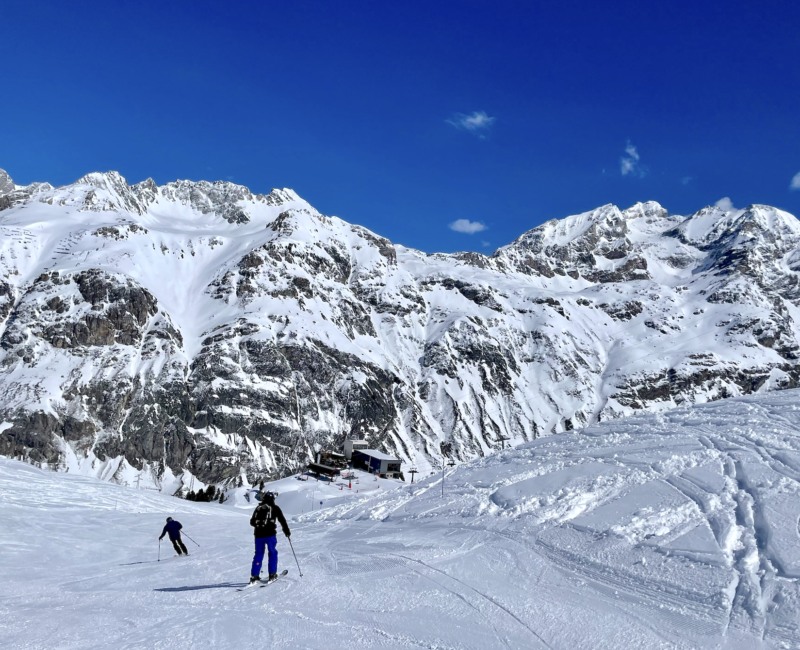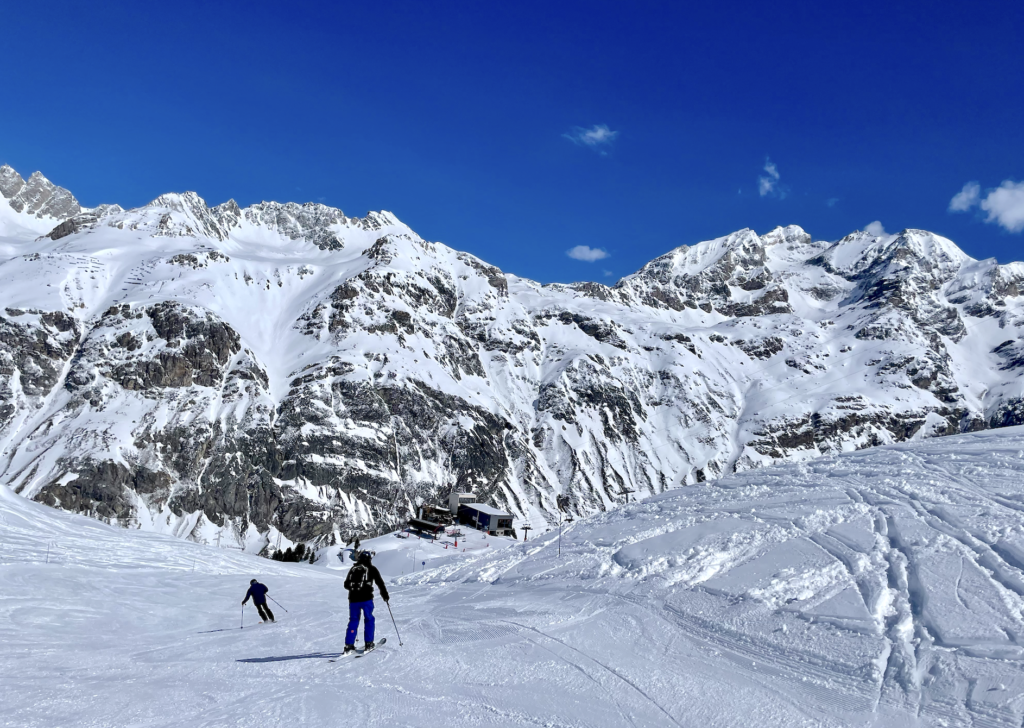
Val d’Isere in spring. Photo: © F.Hardy
Peter Welcome to our travel podcast. We’re specialist travel writers, and we’ve spent half a lifetime exploring every corner of the world.
Felice So we want to share with you some of our extraordinary experiences and the amazing people we’ve met along the way.
Peter This week we’re in Val d’Isère for our final fling of winter 22/23. One ski season ends and another begins. As the lifts finally close on what has been snow wise, a near disastrous season in low lying resorts, this is probably an appropriate moment to take a detailed look ahead at what this rollercoaster of a winter may mean for the future of skiing in Europe.
We’re not talking here about some distant decade, but the current one like this coming December or January – or the following one. Will there be enough snow when I go?
Felice Well, that depends on so many factors. Oddly, this past one has been a bumper year for some tour operators and terrible for others. ‘Altitude’ is the key word and we will come back to that in a minute. Peter, you’ve probably written about snow conditions and skiing in general over the years more than anyone else in the UK. How do you see the future?
Peter Well, certainly I’ve been pontificating on this subject for almost half a century, but I still can’t read the future. I know no more than anyone else, but experience does allow me to make a few pointers.
Back in the 1970s, I could never have imagined that we would be having this conversation. But times are changing and the pace seems to be quickening.
Felice As a general rule, snow arrives in the higher resorts in November with a handful of them opening their lifts for very dedicated skiers. The majority of destinations follow in mid-December in time for the holiday season. By then, there should be enough cover.
The main flood of visitors then continues in most places until about two weeks after Easter. That’s when the biggest UK tour operators switch their flights to the summer destinations, which is a much larger, more lucrative operation for them.
Peter Yes, well, that’s how it used to be when Mother Nature played ball. But now we’ve got to face it: snowfall in autumn in the Alps and the Pyrenees is becoming, I believe, increasingly unreliable.
This last December, many resorts had to delay their openings altogether. A few even, humiliatingly, had to close again just after they’d opened. Mountain biking, hiking and even tennis in December are certainly no substitute for snow-cover.
Sure, over the years, from time to time we’ve been here before, there’s some fairly compelling evidence that the potential ski season has shifted forwards, with less snow falling before Christmas and more snow falling in late April and, indeed, in early May.
But that apart, higher temperatures are taking their toll on skiing and quite dramatically so. With glacier melt, the continued loss of permafrost is now prevalent across the whole of the Alps.
Felice We should probably mention Norway here. While the Alps suffered over last Christmas with ribbons of artificial snow cutting across the green mountainsides, the Norwegians enjoyed their best start to a winter in generations.
Peter Yes, indeed. Their cover over the holiday period was fantastic, but sadly, this one-off doesn’t detract from the gloomy overall picture. Let’s go back to the ‘altitude’ word. Across the relatively low-lying Austrian Alps. It’s no secret that resorts in the Tirol are looking to expand their marketing…as summer destinations.
Ski resorts in the French Pyrenees, the Jura and the Grand Massif, along with lower ones in the Alps, have serious question marks over their immediate futures. Running a lift system, even more so now with the energy crisis, is mind-bogglingly expensive. Personally, I predict a trickle of resort closures becoming a steady stream in the years to come.
Climate change in the Alps will probably mean more precipitation with this falling as rain in the lower resorts and as snow only in the highest resorts. By that I mean in ski areas above 2000 or even 2500m.
Felice So where does that leave us? Cervinia in Italy, that’s been a ski resort since the 1930 so it’s not new. The skiing is good for beginners there, but the immediate slopes above the resort lack challenge for competent skiers. It’s not really very picturesque either. In fact, the whole place could do with a facelift, and that’s exactly what it’s now getting.
Peter Yes, I was there this winter. The whole place is bustling. It’s got new hotels, including a magnificent five star, and they’re springing up all over the place. They’ve invested £13.5 million in recent years in their snowmaking, 13.5 million. They’re spending 80 million on new lifts and a further 100 million has been earmarked for future development of the lift system.
Cervinia opens its Alpine Crossing this summer: a direct all-year link to Zermatt in Switzerland. It’s also looking to link up with Champoluc and the Italian Monterosa ski area. Incredibly, this will be the heart of what will then be one of the three largest linked ski areas in the world.
Which one of these will actually be the biggest depends, of course, on how you measure the size of a ski area. This involves a level of honesty, accuracy and transparency and self-description that most resorts are not too strong on.
Felice But Cervinia’s story is showing great faith in skiing having a future, isn’t it again? We’re back with the word ‘altitude’.
Peter Yes, I love seeing. I’m still passionate about it. It’s been and remains a major part of my life. But how do I see the future of it in Europe? Of course, it will still go on long into the distant future in high-altitude villages. But in commercial terms, my vision is that our perception of the ski holiday with all its trappings and enjoyment and entertainment, will centre on a diminishing handful of sophisticated, high-altitude superhubs with the required hotels and restaurants and shops and nightclubs, and along with it, a giant ski area where snow cover is guaranteed for the entire season. Cervinia is, of course, one of those superhubs.
Felice And the others?
Peter Val Thorens of course, Zermatt and Val d’Isère, combined with neighbouring Tignes.
Felice Is that really all?
Peter Well, no, of course there are other resorts with big ski areas for sure. I mean, take a look at La Plagne, Les Arcs, St Anton…I don’t know…St Moritz, Davos, Sestriere in Italy. But I’m talking not just about the high resorts, but places where most of the ski area is above 2500m – and that severely limits the choice.
You could ski in loads of resorts, but ask yourself the question ‘Am I prepared to book a chalet or a hotel in one of these now – at Christmas, New Year or even January – in the absolute certainty that there will be good snow when I get there?
Felice What makes a place like Val d’Isère so special? What makes it stand out from the pack? We met up with veteran British resident, John Yates Smith.
Peter So, John, you are the expert on Val d’Isère. You’ve been living here for how long?
John 47 years.

John Yates-Smith of YSE. Photo: © F.Hardy
Peter That’s a long time. And you do now speak rather good French, don’t you?
John Not as good as it should be, but I can make myself understood.
Peter And you know lots of people; you are very much a part of the resort.
John Well, I think I am. But most of the locals…I don’t get offered a cup of coffee in any local restaurants or anything like that. So I’m not really a part of it; I’m still a foreigner.
Peter But you’ll always be a foreigner in a place like this. And not just this resort, and in it’s in all resorts.
Felice You must have seen so many changes here. What are the biggest ones?
John Well, I’ve hardly been aware of the changes because they’ve come in gradually over those years. So people who haven’t been here for 20 years come back and say, ‘My God, it’s changed.’ And I look around and think, well, what’s changed?
I think Val d’Isère has really retained its old spirit. It’s remained a little village with a few local families and a very, very nice attitude too, towards tourists. In my 47 seasons, no one has ever said, ‘Hey, rosbif, why don’t you go home?’ No one. I mean, if a Frenchman went and lived in a British resort for 47 years, he’d get things thrown through his letterbox and everything. And people have been amazingly nice to me. My brother set up a nightclub here and the other nightclub owners…
Peter Dick’s Tea Bar?
John Yes. The other nightclub owners helped him carry his bar into the nightclub. So, I mean, people here are surprisingly nice, and that hasn’t changed. The actual ski area hasn’t really grown, I don’t think. But the skiing is great everywhere now – much better. When I first came…there were patches of mud and rocks and things; you don’t get that now.
And the resort has gone a little more upmarket – there are all these five-star hotels and incredibly expensive restaurants, but there are still cheap places to stay and cheap restaurants. So although rich people love coming here now, you don’t have to be rich to come. So I think Val d’Isère hasn’t changed as much as people think it has.
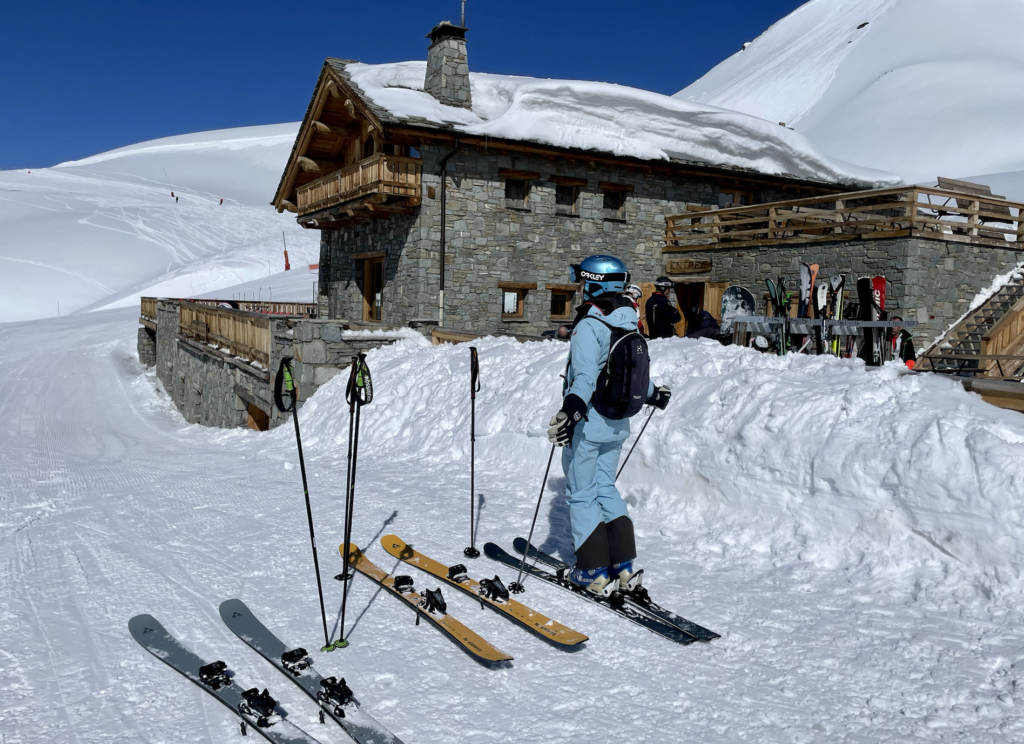
Photo: © F.Hardy
Peter I think that’s very true certainly on the prices, you can pay quite enormous amount of money for a main course and a restaurant here. You can also buy a bottle of wine…we went last night to Le Bambou, a little Oriental restaurant that opened a couple of years ago. A bottle of excellent Côte du Rhône in there: €24. Now, you can’t find that in most ski resorts in France.
John No, and I don’t know why, but somehow Val d’Isère has never been arrogant. You would think it would be probably be rather arrogant about Val d’Isère, but the Val d’Isère people are not.
Peter They’re not like Courchevel or Megève.
John Absolutely. I don’t think people here think they’re anything special. And no one’s ever said to me, ‘Oh, God, you’re lucky you’re coming to Val d’Isère, aren’t you? Isn’t it a wonderful place?’ No one’s ever said that.
Peter Well now we’re reaching a place as we move into a world of global warming, which we have to accept…in some respects…or perhaps it’s only a cyclical thing, but we’ve had a very, very mixed winter in the Alps here.
For most resorts, it started very, very late with no snow over Christmas and fairly intermittent falls since. Val d’Isère’s been a bit different, hasn’t it? It got off to a bad start – but the bad start was in November and the first week had to be delayed. Indeed, the mayor told me the other day that in future they would always be starting at the beginning of December.
John Really? They used to do courses; I remember they used to do bumps courses and powder courses and things in November and that hasn’t happened for many years now. So it does seem as though the season’s moving later. But we had good snow through December actually; after that late start the skiing was very good.
Then we had a five-week period where we didn’t see a cloud and the skiing below the mid-stations in the afternoon was quite difficult. It was pretty icy. But the whole resort was fantastic in the morning; you could ski down the Face de Bellevarde in the morning. It was absolutely gorgeous.
As the day went on, you had to stay above the mid-stations, but the skiing was fantastic. Everybody would come out from Britain saying, ‘Oh, is there any snow?’ There was fantastic snow. And no one actually believed us until they actually got on the slopes. It was difficult in the afternoons for a few weeks, but that’s all.
Felice How much skiing do you manage to get?
John I do about two hours a week, so not as much as I would like to be doing, not as much as I should be doing. I knackered my back by skiing in the bumps for many years, badly, and so my back is slightly sore. But still, if it’s a sunny day I managed to fit in a couple of hours.
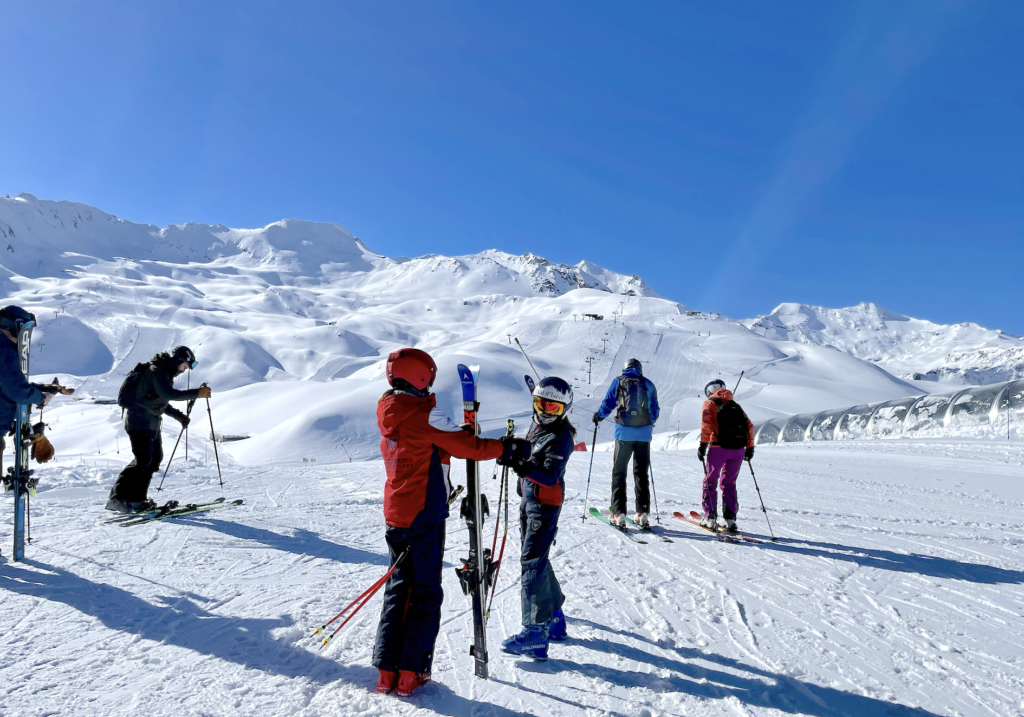
Photo: © F.Hardy
Peter Well, certainly we managed yesterday to have some quite remarkable skiing with pistes in perfect condition. And we woke up this morning and I’m looking outside the window at the high street now. Just describe what it’s like?
John Well, it’s belting down snow. There’s snow on all of the trees. I mean, it’s snowed about six inches overnight, a bit more probably. And it snowed the day before and the day before that. Yesterday was a sunny day but by the evening it was snowing again. It snowed, I think, on at least the last seven days. And good snow…right down to right down to the lowest point: the bottom of La Daille. All the way down the skiing was really good.
Peter In your 47 years, you can safely say that from the beginning of December until the beginning of May skiing is guaranteed here?
John I suppose you can never say it’s guaranteed, but I can’t remember a year when it wasn’t fantastic all the way through, and there have been several years when it snowed more in April than in any other month. So that’s very Val d’Isère. So right through the season we do get good conditions and, yes, there are all sorts of little factors – slightly nerdy factors – that I think mean why Val d’Isère has exceptional snow, because it does.
If I were a member of the public I wouldn’t believe some idiot in Val d’Isère saying, ‘Oh, we’ve got better snow than anywhere else,’ but our altitude helps. We are at 1850m. There are other resorts that claim to be at 1850m which aren’t. (I won’t name one of them.)
La Daille, the very bottom of La Daille, is at 1790; the church is at 1840; the gendarmerie is 1850. The lowest slopes…the nursery slopes start at 1840. So the skiing here is genuinely above 1850 meters, so that helps.
Peter And how high does it go up?
John 3003, is it? No, that’s on the Motte, I think. Yes, it goes pretty high. I never go up there; you never actually need to unless you’re skiing in June or July. Then of course we get more snow than pretty much anywhere else. Even more than Tignes I think.
Peter Just explain the Retour de l’Est?
John Well, the prevailing winds come from the west, and we’re just against the Italian border where there’s a ridge of mountains and the wind seems to go into Italy, hook round, come back and dump a whole lot of snow along our side of the border. I wouldn’t believe it if somebody said this to me, but apparently it happens.
So La Rosière gets it, we get it, Bonneval gets it, Isola 2000. These resorts get this extra snow, but we keep it and I think many of the other resorts. We’re very north facing – and again, no big deal, we’re north facing.
But if you look at look up our valley, the south-facing slopes, which are on the north side of the valley, of course, are bare all winter, pretty much. They’re bare. And the south-facing slopes have got 7 or 8ft of snow on them. It’s extraordinary how much difference it makes just which way you’re facing.
Peter And of course, on top of this phenomenon called the Retour de l’Est, where we get this narrow, narrow band of snow that comes in, we also have the main snowfall, which comes in obviously from the Atlantic like it does for every other resort.
John Yes, I don’t think we get more than other resorts on that westerly snowfall, but it does last longer. And we’ve always skied into May and there are not many resorts that can claim that. Then, of course, we’ve got what is, I think, France’s – possibly Europe’s – best snow-cannon network. Not just nearly 700 snow cannons, but the important thing is how much water you’ve got.
If you look at other resorts, they’ve mostly got a little stream running through them. For some reason Val d’Isère has got two pretty healthy rivers – the Isère coming down one side, the Calle Vaudan coming down….I don’t know where they come from. Where does this water come from in the middle of winter? I don’t understand it. But we do have a lot of water in Val d’Isère, and that means they can make a lot of snow.
Felice What sort of thing did you do when you first came to Val d’Isère? What were you doing here? Were you a tour operator then?
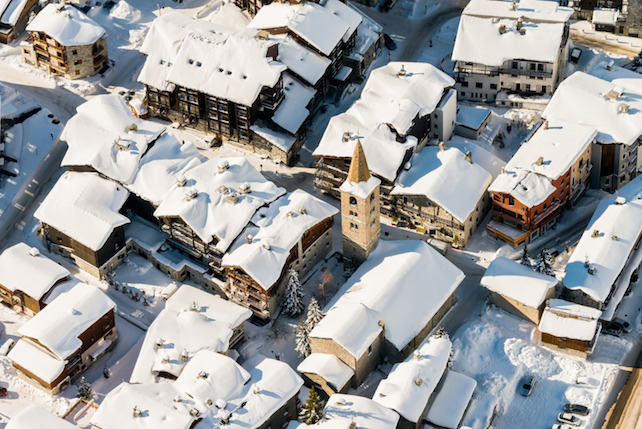
Photo: © Val d’Isere Tourisme
John I was a dishwasher. I came to wash dishes. And my first season, my second season, I was promoted from dishwasher to head of hydro ceramic hygiene, which meant I had someone else who did the dishwashing. And then after that, I finished up driving a van. Then, against my will, I finished up a rep for a little company and I just never left.
Peter Then you started your own company, YSE. In what year?
John End of ’91 we opened, and went straight into the Olympics in ‘92, when we had to pay lots of extra rent because everyone was expecting Val d’Isère there to be absolutely bursting for the Olympics. In fact, nobody came.
I think it was Konrad Bartelski in the Sunday Times who said, ‘Don’t go to Val d’Isère during the Olympics. You won’t even get in; there’ll be such major traffic jams.’ There was nobody here. So we paid all this extra rent, had no guests at all. It nearly ruined us. But it was a fun couple of weeks.
Peter And you’ve gone on ever since?
John Yes. Well, touch wood, we’re still surviving. Brexit and COVID threw a bit of a spanner in the works.
Peter And you no longer have flights included in the price?
John We don’t anymore, partly because it nearly ruined us. When we were thrown out of France because of COVID, we still had to pay for our aircraft which weren’t flying. And then Brexit means that we’re now treated exactly the same as people coming in from sub-Saharan Africa – we have to be tested for diseases and all this sort of stuff. So yes, Brexit and COVID caused us a few problems.
Peter But you’re planning to carry on?
John Well, I’ve got children and I can’t afford to stop.
Felice Do you stay here all year round or do you go somewhere hot?
John I live here most of the time, partly because I’ve had children that I needed to walk for the last 20 years, and I’ve now got a dog I need to walk probably for the next 20 years. But I go off to Corsica for about a month every summer, get my fill of sunshine and rudeness.
Peter John, thank you very much indeed.
John Pleasure.
Felice If you want to know more about YSE or book one of their chalets, go to yseski.co.uk

Ken skiing in Val d’Isere. Photo: © Progression Ski
Peter Ken Smith, head of Progression Ski, one of the resort’s most respected British ski schools, is by comparison, almost a newcomer to Val d’Isère. But Ken Smith, how long have you actually been in Val d’Isère.
Ken In terms of seasons? I think this is my 27th season working in Val d’Isère.
Peter But you’ve run a ski school for how long?
Ken Well, we opened in 2006 and I’d run another ski school prior to that. So we’re fairly well established now and all looking good for the future.
Peter So we’re in a very good position to tell me why Val d’Isère is such a really important resort – perhaps becoming much more important it has been.
Ken Perhaps the obvious thing that we’re seeing, particularly in the last couple of years, is that the higher resorts are benefiting because the lower resorts are suffering with a lack of snow. Val d’Isère in particular – whilst we’re at 1850, which in itself is quite high, actually most of our skiing is actually again above 2800. So with climate change and the change of the seasons, undoubtedly Val d’Isère is in a great position for both the quality of snow, the length of season, and it’s a nice resort to be in. So we tick a lot of boxes, actually.
Peter Quite a lot of resorts where the skiing…actually the best skiing…is beneath the resort, whereas here it’s definitely much higher up.
Ken You know, we’ve got two glaciated areas. And one thing that’s certainly changed in the last ten years in particular, we’ve seen that some of the run routes have changed, so they’ve been able to be quite picky about the way they’ve set up the resort, and they’ve seen how the snowfall has changed and the areas in which we’re getting stronger snowfalls.
So by being higher and having a big ski area, undoubtedly it can be better managed. With a large terrain, the operators can chop and change a little bit from season to season depending on where the snow comes from and where it lies. So we’ve always got good options, always, throughout the season, even in the poor seasons, we’ve got good snow.
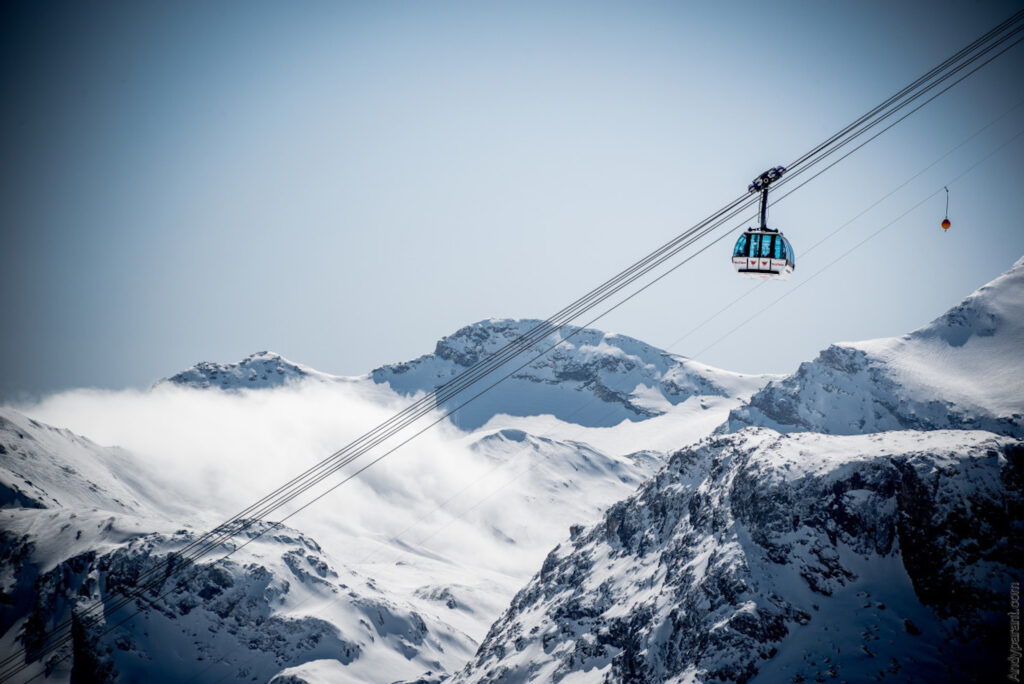
Photo: © Val d’Isere Tourisme
Peter It also has a glacier, of course, a small glacier which will last summer was quite damaged by the incredibly high temperatures, but that seems to make quite a bit of recovery this winter. There’s been a lot of snowfall, hasn’t there?
Ken In the last ten days, we’ve up top, we’ve had well over a metre of snow. In certain areas, we’ve had six metres of snow. But the coverage now is absolutely fantastic.
Peter Yes, there’s a lot of talk going on at the moment that if you want to go skiing now, go to California because that’s the only place with good snow. Not true.
Ken Absolutely not true at all. So and if we look at it historically, albeit, yes, last season we had a very warm summer and that winter wasn’t a particularly good snow season. It was only four years ago that we had skiing in June on the Bellevarde area, which isn’t even a glaciated area.
Peter They actually reopened the ski area after they closed it a month later because there was so much snow.
Ken Yes, exactly. So albeit that’s a once every decade event, we do have these great snow seasons. Even our worst seasons this season in particular where if you look at the stats, we’ve had poor snow, but the piste skiing from top to bottom has been absolutely fantastic.
Peter So in all your years here, have you ever had a season when you can’t ski there was closes or anything like that?
Ken No. I think the worst thing, the worst season we’ve ever had, it may have been a sort of ten-day delay in the opening of the season. We are one of the earliest resorts in Europe to open normally the last weekend in November, so a week or a ten-day delay would be the absolute worst. We’re definitely always open by, let’s say, 10th of December.
Peter So do you believe that ski seasons are going forward, so to speak, that there’s less snow at the beginning of the season and more snow at the end? It certainly looked like that today.
Ken Well, I’m not sure what the statistics are, but from my own personal perspective, over the past 27 years or so, undoubtedly it feels as if the snow is coming later.
We definitely used to get a lot of snow in November. Now we’re getting that big early snowfall in early December. And then at the end of the season, we’re getting big snowfalls and we’ve got more snowfall forecast. So it definitely feels as if the season’s shifted rather than actually changed in that sense.
Peter Well, certainly skiing here today, all over the resort, I felt that it could well have been late February.
Ken So I was up on the Fornet glacier, it was probably -1 this morning, -2. Snow was definitely December/January snow. It was blue sky, fantastic stuff. Couldn’t complain.
Peter So it was by chance that you came here in the first place. I believe that in the future there will be a relatively small number of major resorts in Europe where you can actually guarantee that there will be snow throughout the season.
Ken There’s no question of that. Particularly late season when people are still coming out for their Easter holidays, that’s the obvious one. But early season as well, where we tend to get the keen skiers coming – not in the same numbers as Easter, but anyone coming for late March and April will undoubtedly have to look at the higher resorts as a place to ski.
But also they’re going to have to be wise about it, because some of the high resorts are very south-facing. And that aspect is key, because here in Val d’Isère we have steep sided valleys, a lot of north-facing pistes. So undoubtedly our skiing both on- and off-piste is somewhat protected by the changes that we’re seeing.
Peter So tell us a bit about Progression Ski?
Ken Well, I set up Progression Ski in 2006. Prior to that, I’d worked for a large ski school and we used to do a lot of group lessons and it was very much, dare I say, a factory school. And at that time there was these large schools and then the very small schools which were specialising in the private type lesson. I definitely felt that at that time there was a niche, a gap in the market, for a high-quality product which covered all levels of skiers.
So we went out with the idea that we wanted to provide good quality group lessons for adults and kids, from beginner all the way through to off-piste and freeride skiers. We’ve quietly built it up and now we have 12 full-time instructors, and in the busy high season week we’ve up to 30 instructors, which tends to come about through the previous full-time instructors coming back for a week here and there. A nice size where we can guarantee quality, but also offer a lot of options.
Peter Tell us about the new business you started?
Ken So I’ve set up a booking agency for chalets, hotels and self-catering apartments, mainly on the back of having genuine local knowledge of the products that are on offer from all the providers in resort. So whilst it’s very easy to look on a website and find nice pictures of a chalet or a nice apartment or hotel, you don’t actually know whether a ski-in ski-out is actually at the bottom of a black run, or at the end of a long path, or if a self-catering apartment is close to a supermarket. So indeed, whether.
Peter Indeed whether there’s a ski shop nearby or indeed a lift nearby.
Ken So simple things like, you know, is there a bus stop nearby for a self-catered family apartment. I know these things. It’s that little insider knowledge and genuine understanding of the layout of the land in the resort itself that means that I can give a much better all-round picture and better advice than people might have generally have from somebody based in the UK, for example.
Peter Sounds good. So tell us the name of the agency?
Ken The agency is Alpine Exclusive. The website is AlpineExclusive.com
Peter And Progression Ski – if anyone wants ski lessons in the resort, how did they get hold of you?
Ken Well, the easiest way is online, so on the website ProgressionSki.com
Peter So there you have it. Our vision of the commercial future of skiing in Europe is centred around a handful of high-altitude superhubs where reliable snow-cover is guaranteed throughout a season that is creeping slowly forwards. Val d’Isère is scheduled to open for 2023 on Saturday, December the 2nd. For more information, go to Valdisere.com
Felice That’s all for now. If you’ve enjoyed the show, please share this episode with at least one other person! Do also subscribe on Spotify, i-Tunes or any of the many podcast providers – where you can give us a rating. You can subscribe on Spotify, Apple Podcasts or any of the many podcast platforms. You can also find us on Twitter, Facebook and Instagram. We’d love you to sign up for our regular emails to [email protected]. Until next week, stay safe.
© Action Packed Travel

- Join over a hundred thousand podcasters already using Buzzsprout to get their message out to the world.
- Following the link lets Buzzsprout know we sent you, gets you a $20 Amazon gift card if you sign up for a paid plan, and helps support our show.

